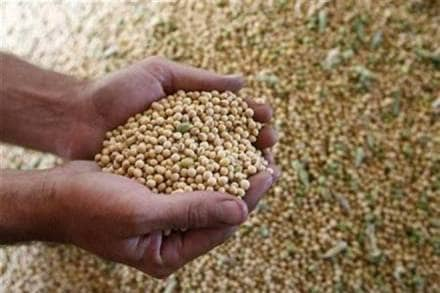This kharif season, there has been a loss of acreage in soybean planting by farmers who have opted for other crops such as cotton, industry sources say. In Madhya Pradesh, sowing is down by 15%, cropping is down by 3% in Maharashtra and 7-8% in Rajasthan. Soybean planting was hit considerably in Madhya Pradesh, which accounts for more than 60 % of the country’s production.
There is an overall loss of roughly 10% in the total acreage so far as compared to the previous season, says Davish Jain, president, Soybean Processors Association of India ( SOPA). “ The reasons are pretty obvious. Edible oil prices have gone down by 15% and there has been a heavy influx of imports in the country. The strengthening of the rupee has led to pressure on prices. The onset of GST is another contributing factor,” he pointed out. Moreover, the progress of monsoon has not been as satisfactory as expected in the soybean growing states, he added.
Although heavy rains are not required for soybean, the overall distribution and timing of rains has to be proper, Jain said. A prolonged dry spell causes loss of productivity and the situation this season is not as good as last year, he said. Last year, the soybean acreage had touched over 110 lakh hectares and this year acreage is unlikely to cross 100 lakh hectares, Jain added. SOPA teams are currently assessing the regions and according to their findings, productivity may be affected this year. However, the country currently has a huge inventory of some 1.5 to 2 million tonne and this could act as a balance, Jain explained.
The strengthening of the rupee is also likely to make exports difficult for the country. During current Oil year, (October–September), total exports during October 2016 to July 2017 is 16.46 lakh tonnes as against 3.48 lakh tonnes during the same period last year, showing an increase of 372.72%, SOPA said.
Earlier, the association had pointed out that the government has not taken timely steps to raise import duties inspite of several demands made by the industry. The last duty was raised in September 2015. Significantly, soybean prices are at a 10-year low and realisations offered to oilseed producers are not attractive and remunerative, Jain said. To add to the woes, the government has raised MSP of soyabean by 10% without simultaneously raising import duties and this has hurt the industry badly, he said. Processing parity is needed to recover the costs involved in processing and industry is not in a position to pay the higher MSP to farmers, he pointed out.
Moreover, after two years of drought, the current year had witnessed oilseed production rebounding. However, the increase in production has not brought any cheer to our farmers as prices have collapsed below the MSP levels, the Solvent Extractors Association of India had said. Probably, for the first time in decades, soybean, rapeseed and groundnut have moved below MSP. The current price level is the lowest in the last five years and farmers are discouraged to sow the oilseeds in the kharif season, the association had said. With a view to ensure that the farmers do not lose their interest in oilseed cultivation, the association has strongly pleaded to the Central Government to raise the import duty on crude oil to 20% and refined oil to 35% as a short term measure to support the price. Last year, soybean prices had dropped mainly on account of bumper production witnessed in kharif 2016, at about 115 lakh tonne, against 69 lakh tonne in 2015.
